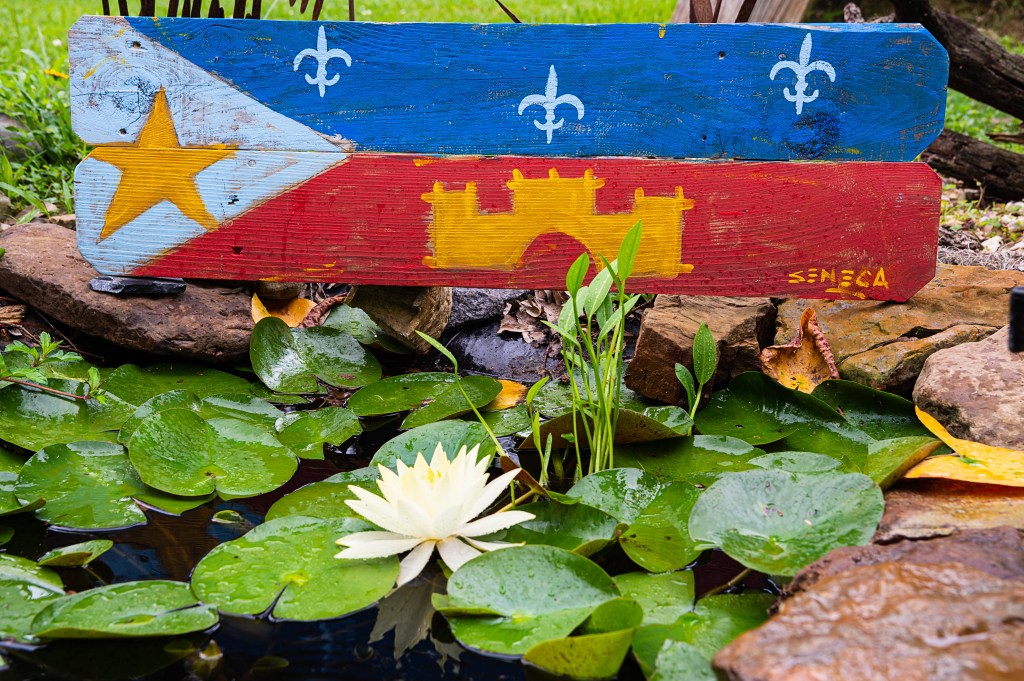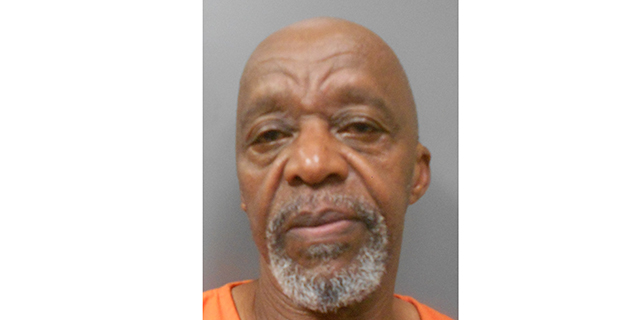New Iberia painter builds enthusiastic following.
Published 8:00 am Wednesday, July 14, 2021

- A Steve Seneca painting adds a finishing touch to a garden pond. Lee Ball Photography
When he was 12 years old, Steve Seneca had no idea a watercolor set given to
him as a Christmas gift by his beloved godmother Na’nan (a painter) would set him on a course to being an artist. He was in good company; when Blue Dog artist George Rodrigue was a child and bedridden with polio for months, his mother bought him a paint-by-numbers set. Looking back now Seneca realizes, “I was exposed to my nanny’s paintings early in my life, and that influenced me. My mom has drawings of mine from as early as 5.”
Painting is a talent he would grow into, first discovering oils was a medium he could work with in a passionate way, then turning out his first painting at 21. “It was an abstract of arrows,” he muses. It wasn’t until after he married that he took his work seriously, recalling, “My wife and I would go to arts and crafts shows, and I would look at the works
of different artists and think to myself, ‘I can do that and sell it.’” And he did, with his first art show at Shadows-on- the-Teche in 2005.
Most artists recall the moment they felt like they had “arrived” in their careers. For Seneca that moment was when his design was chosen for the Louisiana Sugar Cane Festival poster in 2013 – a first for him that is still hard to describe. “Growing up in New Iberia, the Sugar Cane Festival was the festival and to have my poster represent that, meant a lot to me.” The following year Seneca’s poster was chosen again, and his art would also grace two Gumbo Cookoff posters. Had the 2020 Books-Along- the-Teche Literary Festival taken place, it, too, would have been commemorated with his poster art.
His work has been shown at the LSU Museum of Art, where his Louisiana exhibit replaced Andy Warhol’s for six months. His depictions of Louisiana’s beauty and culture have been on display locally, as well as in Port Barre, Baton Rouge and two galleries in New Orleans. Over the years the subjects of his work have included landscapes, cityscapes, portraits and the culture of the people. He also utilizes pen and ink and watercolor pencils.
Describing his style as “loose Impressionism,” Seneca credits the influences of two instructors: famed master of portraiture Carl Groh, III, who taught him the techniques of the Old Masters, and nationally-acclaimed plein air painter Suzie Baker. He also remembers advice given to him by Rodrigue years ago that he still employs today. “A friend invited me to attend George Rodrigue’s 65th birthday party in Lafayette. Later I emailed George (reminding him of our mutual friends) and asked him advice on being an artist. He sent back, ‘Paint as much as you can, because today most artists don’t paint enough.’”
Seneca enjoys his time in the upstairs studio of his home, where the northern light brings a soft glow through the windows. “I’m a morning person,” he says, “so before work I get in some paint time from six to seven o’clock. Saturday and Sunday mornings, I
have more time and, when I get into a project, I’ll paint for three or four hours – always with my rock and roll playing.”
In his outdoor studio, his artwork reflects a unique interpretation of his culture – the pelicans, Tabasco, sugarcane and Mardi Gras – due to his using a different medium: wood. What began with a search for a specific frame style for his paintings turned into making his own frames from reclaimed cypress. That soon grew to painting acrylics on reclaimed cedar fence boards. “I wire brush and sand them to clean them
up, connect two to five boards and use that as my canvas. I’ve mixed mediums, putting brass and copper on the board paintings, and have also used sand in the paint,” he explains. The trend towards decorating patios, especially outdoor kitchens, has brought Seneca much commissioned work. Last month he worked on pieces that included a four-foot-wide sea turtle, New Iberia’s Essanee Theatre sign, and a Mardi Gras painting. When there’s time, he also paints onto carvings made from old cypress driftwood.
Outside of his studios, Seneca says he is open to the inspiration all around him. “I look for it in nature – especially the fleeting light, as it shifts and changes color – in architecture with different angles, people in everyday life settings, even TV.”
In fact the idea for one of his best-selling paintings Swamp Bird Gathering originated while he was watching an episode of the TV series “Swamp People” when a certain cypress tree caught his eye. He took a picture with his phone and printed it. On another occasion he found a picture of some egrets and roseate spoonbills from a brochure. Over time, several pictures came together, slowly unveiling in his mind the scene of birds nesting in cypress trees deep in the swamps.
The most inspiring place for the artist has been Avery Island, where he’s worked as an electrician at the Cargill Salt Mine for 42 years. “The landscape around the salt mine is inspiring. I often go to the Jungle Garden with pencil and paper to sketch ideas for my next painting; I could spend all day there,” he says longingly.
There is a strong sentiment of pride and a desire to record culture in Seneca’s art. “I feel the same as a writer would,” he says. “I put down my feelings and vision in a way my experiences have shaped me over time. I create what I know.”
Seneca’s work can be seen at the Lafayette Farmers & Artisan Market most Saturdays and at etsy.com/shop/ SenecaArtistStudio.





